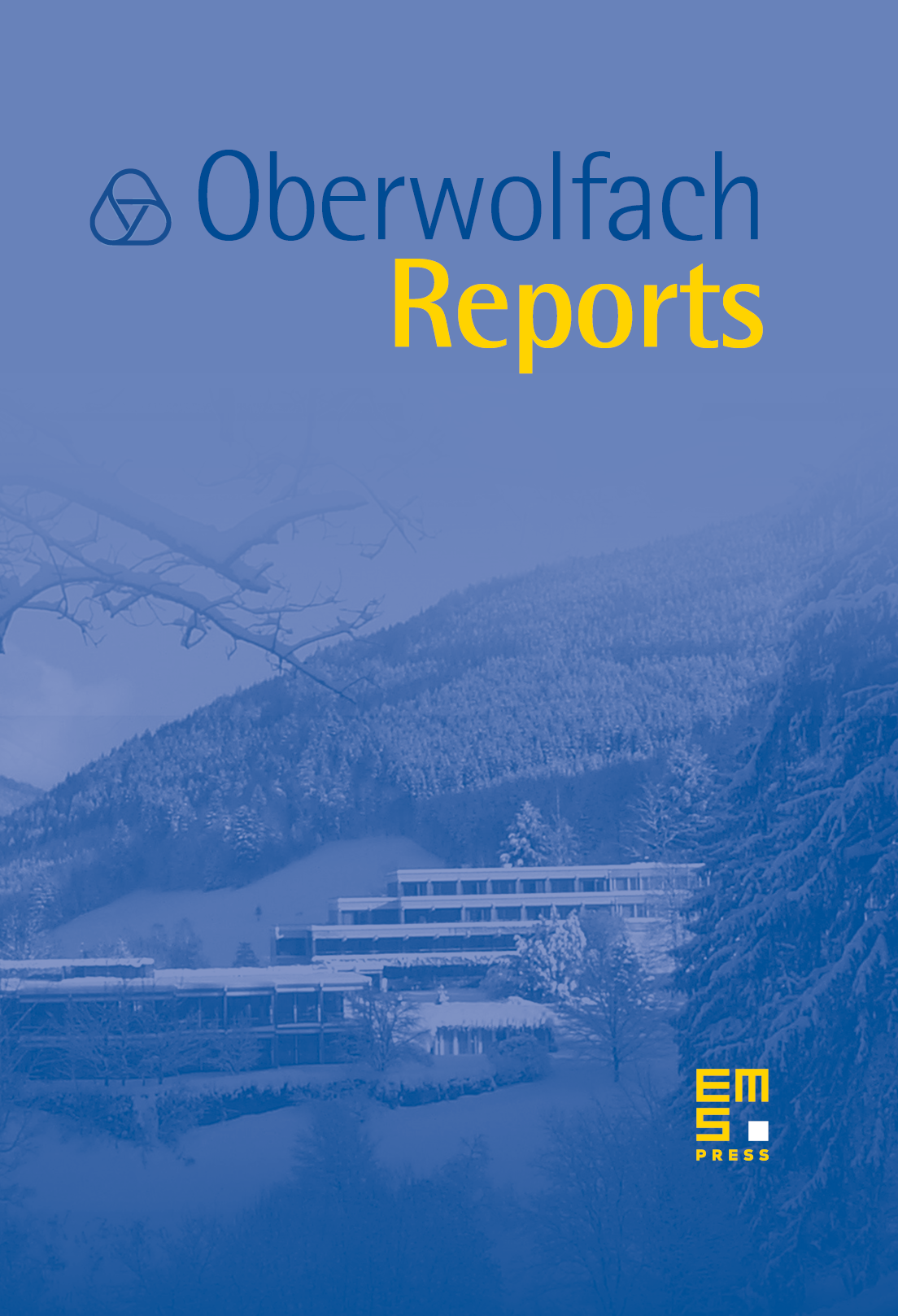Mini-Workshop: Particle Systems with Several Conservation Laws: Fluctuations and Hydrodynamic Limit
Christian Klingenberg
Universität Würzburg, GermanyGunter M. Schütz
Forschungszentrum Jülich GmbH, GermanyBálint Tóth
Technical University of Budapest, Hungary

Abstract
“Particle Systems with Several Conservation Laws: Fluctuations and Hydrodynamic Limit” connects different fields where intimate connections are just emerging. In many applications (like traffic flow, dust models in astrophysics, compressible fluid models) very natural microscopic descriptions of the stochastic dynamics of interacting particles can often be related to macroscopic continuum descriptions using nonlinear evolutionary PDEs. It is hard to rigorously relate these two levels of modelling of the same physical or biological phenomena, though.
Scientific progress in the area of hyperbolic conservation laws for systems of one and two equations has been used in rigorously proving the hydrodynamic limit of corresponding interacting particle systems. Techniques like the theory of compensated compactness in PDEs are emerging as powerful tools in the interacting particle system community. Many other original ideas were and are currently being developed within this second context for systems with two and more conservation laws. This had lead the organizers to believe that time has come to devote a high profile meeting to this subject which is situated at the intersection between nonlinear hyperbolic pde theory, probability theory of interacting particle systems, nonequilibrium statistical physics.
More specifically, the choice of the topic was motivated by the following closely related issues: As it is well-known solutions of systems of hyperbolic PDEs develop shocks and this fact causes major difficulties in the mathematical analysis as well as in the physical interpretation of the microscopic particle structure of a shock. Moreover, in the presence of macroscopic currents, boundary conditions in finite systems determine the bulk behaviour of stationary solutions both of PDEs and particle systems. This has been shown to lead to boundary-induced nonequilibrium analogs of phase transitions which are novel phenomena of particular importance in applications which usually deal with effectively finite systems. It raises the question how microscopic laws of interaction find an appropriate description in terms of boundary conditions of an associated hyperbolic PDE. In our current but not fully developed understanding, the hydrodynamic limit, existence of shocks, and the nature of boundary conditions appear to be very intricately linked problems which require investigation within a common framework. In this context the workshop was concerned with the following problems:
- Derivation of hydrodynamic limit
- Microscopic structure of the shocks
- Open boundary problems
- Dynamical phase transitions
- Large deviations
- Treatment of the theory of conservation laws with entropies coming form microscopic models
The participants, coming from the US, France, Hungary and Germany, were mathematicians from PDE theory and probability theory and physicists working in the field of nonequilibrium statistical mechanics. With all of them being specialists coming from different fields, but sharing a common research interest, this miniworkshop turned out to be a highly fruitful “joint venture”. A number of very successful expository lectures on recent progress in the field helped to bridge the gaps between the different communities. More specialized talks, partly on open problems, led the participants to leave the confines of their respective communities and to interact with each other. All of us enjoyed enormously the externally tranquil, but scientifically vivid and stimulating atmosphere of Oberwolfach.
Cite this article
Christian Klingenberg, Gunter M. Schütz, Bálint Tóth, Mini-Workshop: Particle Systems with Several Conservation Laws: Fluctuations and Hydrodynamic Limit. Oberwolfach Rep. 2 (2005), no. 2, pp. 1199–1230
DOI 10.4171/OWR/2005/22